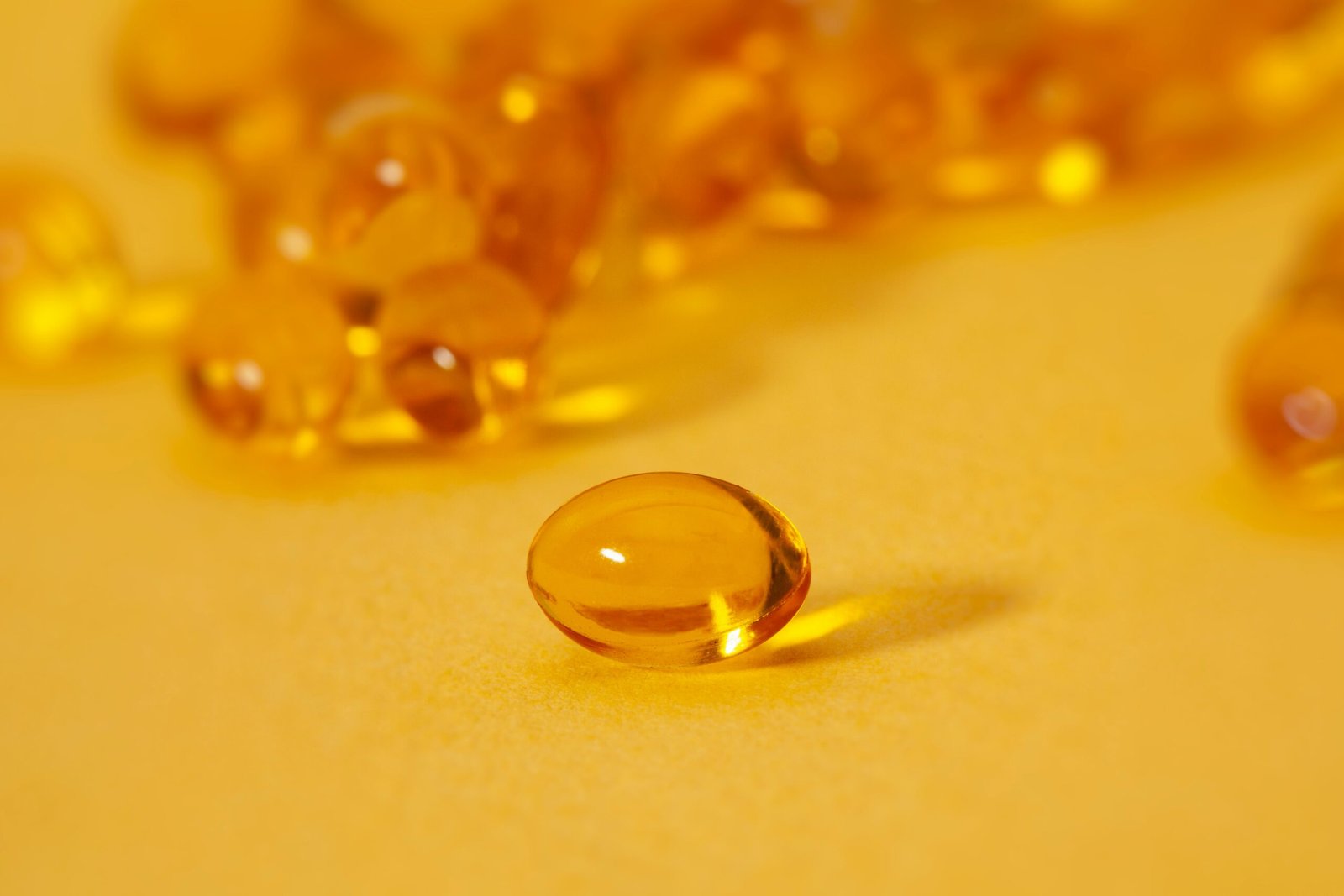Vitamin D, often referred to as the “sunshine vitamin,” plays a crucial role in maintaining our health and well-being. While commonly associated with bone strength, its benefits extend far beyond the skeletal system. From immune support to mental wellness, this essential nutrient has a profound impact on several physiological processes. This comprehensive guide explores its importance, natural and dietary sources, recommended intake levels, and why maintaining optimal levels is essential for your health.
What Is Vitamin D?
Vitamin D is a fat-soluble vitamin that acts more like a hormone in the body. There are two main forms:
-
Vitamin D2 (ergocalciferol): Found in some plants and fortified foods.
-
Vitamin D3 (cholecalciferol): Naturally produced in the skin when exposed to sunlight and found in animal-based foods.
Both forms must be converted in the liver and kidneys to their active form—calcitriol—before they can be used by the body.
Why Is Vitamin D Important?
Vitamin D is essential for numerous bodily functions. It influences gene expression, regulates calcium absorption, supports immune response, and promotes mood stability. Its significance lies in its widespread effects across various systems:
1. Bone and Muscle Health
Vitamin D enhances the absorption of calcium and phosphorus—key minerals for building and maintaining strong bones. A deficiency can lead to rickets in children and osteomalacia or osteoporosis in adults.
2. Immune System Support
Vitamin D modulates both innate and adaptive immune responses. It helps your body fight off infections and may reduce the risk of autoimmune diseases like multiple sclerosis and rheumatoid arthritis.
3. Mental Health and Cognitive Function
Low levels of vitamin D have been linked to mood disorders, including depression, anxiety, and cognitive decline. Ensuring sufficient levels may contribute to improved mental clarity and emotional stability.
4. Cardiovascular Health
Emerging research suggests vitamin D may play a role in regulating blood pressure and improving heart function, though more studies are needed to fully understand this connection.
Common Causes of Vitamin D Deficiency
Despite its availability through sunlight, vitamin D deficiency is surprisingly common. Some of the main contributing factors include:
-
Limited sun exposure: Spending too much time indoors, living in northern latitudes, or using high-SPF sunscreen.
-
Darker skin tones: Melanin reduces the skin’s ability to produce it from sunlight.
-
Age: Older adults produce less and are less efficient at converting it into its active form.
-
Medical conditions: Liver or kidney disease, celiac disease, and Crohn’s disease can affect absorption.
-
Obesity: It is sequestered in fat tissue, making it less bioavailable.
Symptoms of Vitamin D Deficiency
Vitamin D deficiency can be subtle but has significant long-term consequences. Common signs include:
-
Fatigue and low energy
-
Frequent infections or slow wound healing
-
Bone pain or muscle weakness
-
Depression or mood swings
-
Hair thinning or loss
If left untreated, a deficiency can lead to more severe conditions, such as osteomalacia (soft bones), increased risk of fractures, or immune dysfunction.
How to Get Enough Vitamin D
Maintaining optimal levels of vitamin D requires a balanced approach combining sun exposure, diet, and supplementation when necessary.
1. Sunlight Exposure
Sunlight is the most natural and effective way to get vitamin D. When UVB rays hit the skin, they trigger vitamin D synthesis.
-
Best time: Midday sun (10 AM–2 PM) is most effective.
-
Recommended exposure: 10–30 minutes a few times per week, depending on skin type and location.
-
Note: UVB does not penetrate glass, so sunlight through windows does not produce vitamin D.
2. Dietary Sources of Vitamin D
While few foods naturally contain vitamin D, some are excellent sources:
Natural Sources:
-
Fatty fish: Salmon, mackerel, tuna, and sardines
-
Fish liver oils: Cod liver oil is particularly rich
-
Egg yolks
-
Beef liver
Fortified Foods:
-
Dairy products (milk, yogurt, cheese)
-
Orange juice
-
Plant-based milk alternatives (soy, almond, oat)
-
Breakfast cereals
3. Supplements
Supplements are a practical option for those at risk of deficiency or with limited sun exposure.
-
Forms: Vitamin D2 and D3 (D3 is more effective at raising blood levels)
-
Available types: Capsules, drops, sprays, and soft gels
Always consult a healthcare provider before starting any supplement regimen, especially if you have underlying health conditions.
Recommended Daily Intake
The recommended daily intake of vitamin D varies based on age, health status, and sun exposure levels. Here’s a general guideline:
| Age Group | Recommended Daily Intake (IU/day) |
|---|---|
| Infants (0–12 months) | 400 IU |
| Children (1–18 years) | 600–1,000 IU |
| Adults (19–70 years) | 600–2,000 IU |
| Seniors (71+ years) | 800–2,000 IU |
| Pregnant/Breastfeeding Women | 600–2,000 IU |
IU stands for International Units. Some people, especially those with deficiency, may need higher therapeutic doses temporarily under medical supervision.
How to Improve Absorption of Vitamin D
To maximize absorption and effectiveness:
-
Take with fat: Vitamin D is fat-soluble. Consume with a meal that includes healthy fats (e.g., olive oil, avocado, nuts).
-
Consider magnesium intake: Magnesium helps activate vitamin D in the body.
-
Avoid calcium overload: Too much calcium can interfere with vitamin D metabolism and vice versa—aim for balance.
Can You Have Too Much Vitamin D?
Yes, excessive vitamin D intake—usually from supplements—can lead to toxicity, known as hypervitaminosis D. This can cause:
-
Nausea, vomiting
-
Kidney stones
-
High blood calcium (hypercalcemia)
-
Confusion and heart irregularities
Tolerable Upper Intake Level: Most experts agree that up to 4,000 IU/day is safe for adults, though higher amounts may be prescribed temporarily under supervision.
Who Is at Risk for Deficiency?
Certain groups are more likely to experience low vitamin D levels:
-
Older adults (especially those in nursing homes)
-
People with darker skin
-
Individuals with limited sun exposure
-
Those with gastrointestinal conditions affecting absorption
-
People who are obese or have undergone bariatric surgery
-
Vegans or vegetarians (fewer dietary sources)
Regular blood tests (25-hydroxyvitamin D test) can help monitor your levels, especially if you belong to a high-risk group.
Frequently Asked Questions (FAQs)
What is the best source of vitamin D?
Natural sunlight is the most effective source. Among foods, fatty fish and cod liver oil are the richest natural sources, while fortified foods and supplements offer a reliable alternative.
How do I know if I’m deficient?
Symptoms like fatigue, frequent colds, muscle weakness, or depression may be signs. The only way to confirm is through a blood test measuring 25(OH)D levels.
Is it better to take it the morning or at night?
There’s no strong consensus, but many prefer taking it in the morning to avoid any potential interference with melatonin production and sleep.
Can I get enough from food alone?
While diet helps, it’s difficult to meet daily needs through food alone. A combination of sun exposure, diet, and/or supplementation is often necessary.
Final Thoughts:
Vitamin D is far more than just a bone-building nutrient. It supports your immune system, uplifts your mood, and helps regulate vital bodily functions. In today’s modern lifestyle—filled with indoor living, sunblock use, and dietary gaps—deficiency is common but often overlooked.
By understanding the sources, symptoms of deficiency, and strategies for maintaining healthy levels, you can take proactive steps to protect your well-being. Whether through mindful sun exposure, nutrient-dense foods, or appropriate supplementation, making this essential nutrient a priority is a smart investment in your long-term health.



